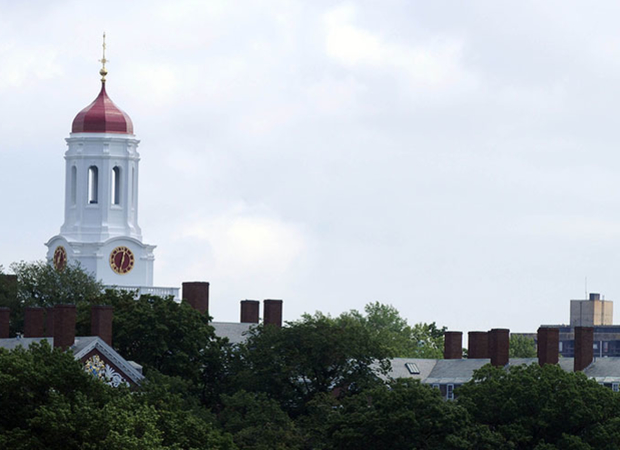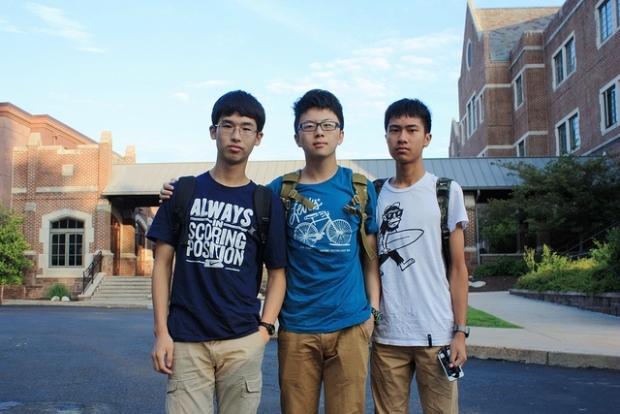In 1981, when Erhfei Liu entered Brandeis University as an undergraduate, he was only the second student from mainland China in the school’s history. “I was a rare animal from Red China,” Liu said in a September 1 interview with Foreign Policy, “an alien from the moon.”
Now, Chinese students are by far the most visible international presence at many universities across the United States, and their numbers continue to grow. This year, during the 2014-2015 academic year, the number of Chinese students studying stateside was 304,040, a 10.8 percent increase over the 2013-2014 academic year, according to a just released report by the nonprofit Institute of International Education (IIE). This is the sixth year in a row that China has been the leading place of origin for international students in the United States. Out of the more than 974,000 international students currently in the United States, almost one in three is now Chinese.
Infographics
12.15.14
Is Studying Abroad Worth the Cost?
from SohuThe number of Chinese international students has increased nearly five-fold since the 2004-2005 academic year, when there were 62,523 Chinese students stateside. Evan Ryan, U.S. assistant secretary of state for educational and cultural affairs, attributed the huge increase to rising incomes in China, as well as the excellence of American education. “There’s a growing [Chinese] middle class interested in their children’s education,” Ryan told FP in an interview. “Globally, people think that you will get the best education here in the United States. The Chinese want to be competitive in the 21st century.”
Particularly remarkable is the fast rate of growth in the undergraduate student population. Chinese graduate students once far outnumbered their undergraduate counterparts at U.S. schools, but by 2015, 41 percent of Chinese students in the United States were undergraduates, compared with 39.6 percent for graduate students. Peggy Blumenthal, senior counselor to the president at IIE, attributes the increase in Chinese undergraduates to the expansion of international high schools in China, where students improve their English and prepare for U.S. tests such as the SAT. “Rather than spending all their time preparing for Chinese tests,” Blumenthal told FP in an interview, “they learn how to present themselves in ways which are much more helpful” for acceptance to U.S. universities.
The dramatic rise in the number of Chinese students in the United States has led in some cases to concerns about the students’ ability to integrate into U.S. campus and social life, which often centers on sports, social clubs, and community organizations that may be unfamiliar to Chinese students. College administrators and Chinese students themselves have noted their tendency to socialize primarily with each other rather than engaging with the broader student community. While it is normal to seek out others who share the same language and culture, “the bigger the cohort,” said Blumenthal, “the easier it is to do that.” In response, many campuses are being proactive about helping Chinese students engage in campus and community life. The University of Illinois now broadcasts football games in Chinese. Purdue University in Indiana has hired Chinese-speaking counselors to staff campus mental health centers. University of Iowa’s Tippie College of Business, where one in five students is Chinese, has provided instruction to professors on how to correctly pronounce Chinese names.
Media
10.23.15
The Eagle, the Dragon, and the ‘Excellent Sheep’
Even with the challenges, Blumenthal views the influx of Chinese students not just as a net positive for the Chinese students themselves, but also for their American classmates. “America is going to be dealing with China as a partner and as a competitor for years to come,” she said. “By having the opportunity to engage with undergraduates as peers, it will provide American students with the skills they need to be effective in the workforce.” U.S. authorities echo the sentiment, saying student exchanges form an important part of public diplomacy. “Having these Chinese students on U.S. campuses helps to build a bridge between China and the United States,” said Ryan. “When we have qualified Chinese students on U.S. campuses and qualified Americans on Chinese campuses, we can build stronger connections between the two countries.”
It’s not just about bilateral bonhomie; the influx of Chinese students into the United States is also big business. In the 2014-2015 academic year, Chinese students pumped $9.8 billion into the U.S. economy through tuition and fees, according to the IIE report. That can make a big impact on the local level. In and around Iowa City alone, for example, it’s estimated that Chinese students contribute around $100 million to the local economy.




